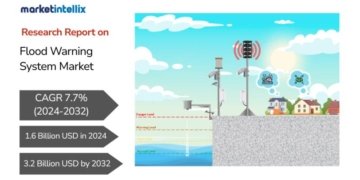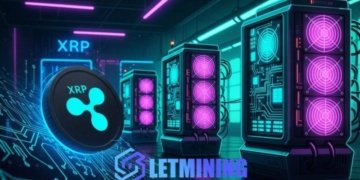The global Lightning Protection Technologies (LPT) market is poised for significant growth, with projections indicating a rise from USD 1,008 million in 2024 to USD 1,792 million by 2035, achieving a robust Compound Annual Growth Rate (CAGR) of 5.4% during the forecast period from 2025 to 2035. This expansion is largely driven by the increasing frequency of extreme weather events linked to climate change, alongside rapid urbanization and heightened awareness of lightning-related risks. Drawing insights from Fact.MR’s detailed analysis, this blog explores the dynamics, trends, and opportunities shaping the LPT market, offering a deep dive into its current landscape and future potential.
For More Insights into the Market, Request a Sample of this Report: https://www.factmr.com/connectus/sample?flag=S&rep_id=2764
What Are Lightning Protection Technologies?
Lightning Protection Technologies encompass systems designed to safeguard structures, equipment, and human lives from the destructive energy of lightning strikes. These systems, including lightning rods, surge protectors, grounding networks, and conductors, divert electrical discharges safely to the ground, preventing fires, equipment damage, or injuries. LPT solutions are critical across industries such as construction, telecommunications, energy, aviation, and manufacturing, where lightning strikes can lead to significant financial and operational setbacks.
Fact.MR emphasizes the adaptability of LPT systems, which are customized to suit specific applications. For example, high-rise buildings rely on advanced lightning rods and grounding systems, while data centers use surge protectors to shield sensitive electronics. This versatility underpins the market’s widespread adoption and growth.
Key Drivers of Market Growth
The LPT market’s upward trajectory is fueled by several key factors. The increasing frequency of extreme weather events, particularly thunderstorms driven by climate change, is a primary driver. As lightning strikes become more prevalent, industries and governments are prioritizing robust protection systems to mitigate risks. This trend is particularly evident in regions experiencing heightened storm activity, boosting demand for LPT solutions.
Rapid urbanization and infrastructure development, especially in emerging economies, also play a pivotal role. The construction of high-rise buildings, airports, stadiums, and critical infrastructure like power plants necessitates the integration of lightning protection systems to ensure safety and compliance with regulatory standards. Fact.MR notes that stringent building codes and safety regulations in many countries are mandating LPT installations, further propelling market growth.
The growing reliance on electronic devices and sensitive equipment across industries is another catalyst. Sectors like telecommunications, renewable energy, and IT depend on electronics vulnerable to lightning-induced surges. For instance, wind turbines, often located in exposed areas, require specialized LPT systems to avoid costly repairs and downtime. Similarly, data centers invest heavily in surge protection to maintain operational continuity.
Market Segmentation: Applications and Technologies
The LPT market is segmented by product type, end-use industry, and region. Product categories include conventional lightning protection systems, early streamer emission (ESE) systems, and charge dissipation systems. Conventional systems, featuring lightning rods and grounding networks, hold the largest market share due to their reliability and cost-effectiveness. However, ESE systems, which proactively attract lightning to enhance protection, are gaining popularity in high-risk environments.
The construction industry dominates the end-use segment, driven by the widespread adoption of LPT systems in residential, commercial, and industrial buildings. The energy sector, particularly renewable energy installations like wind and solar farms, is a significant contributor, as these assets are highly susceptible to lightning damage. Telecommunications, aviation, transportation, and manufacturing also represent key growth areas, as lightning strikes can disrupt critical operations.
Regionally, North America and Europe lead the market, supported by stringent safety regulations, advanced infrastructure, and high awareness of lightning risks. Meanwhile, the Asia-Pacific region is projected to experience the fastest growth, fueled by rapid urbanization, industrial expansion, and government initiatives to enhance infrastructure resilience. Countries like China, India, and Japan are increasingly investing in LPT systems to address rising thunderstorm activity and protect urban developments.
Browse Full Report: https://www.factmr.com/report/2764/lightning-protection-technologies-market
Emerging Trends in the LPT Market
Several trends are shaping the future of the LPT market. The integration of smart technologies is a prominent development, with modern LPT systems incorporating sensors and monitoring devices to provide real-time insights into lightning activity and system performance. These smart solutions improve reliability, reduce maintenance costs, and appeal to industries managing critical infrastructure.
Sustainability is another key trend, with manufacturers developing eco-friendly LPT systems, such as grounding materials that minimize environmental impact. This aligns with global sustainability goals and attracts environmentally conscious stakeholders. Additionally, the rise of renewable energy projects, particularly wind and solar installations, is driving demand for specialized LPT solutions tailored to these exposed assets.
Challenges in the LPT Market
Despite its promising outlook, the LPT market faces challenges. The high upfront cost of advanced systems can deter adoption, particularly among small and medium-sized enterprises (SMEs). While long-term benefits like reduced downtime and damage justify the investment, cost remains a barrier in price-sensitive markets.
Limited awareness of lightning risks in some regions, especially developing countries, also hampers growth. Many businesses and individuals underestimate the potential impact of lightning strikes, leading to underinvestment in protection systems. Addressing this requires targeted education campaigns and government incentives to promote LPT adoption.
The presence of low-cost, substandard products poses another challenge, as these may fail to meet safety standards, undermining trust in LPT solutions. Stricter quality certifications and regulatory oversight are needed to ensure system reliability.
Opportunities for Market Expansion
The LPT market offers substantial opportunities for stakeholders. The rise of smart cities and IoT-enabled infrastructure creates demand for advanced, digitally integrated LPT systems. Companies innovating in smart technology can differentiate themselves in this competitive space.
The global push for renewable energy presents another growth avenue. As wind and private sectors invest in clean energy, specialized LPT solutions for turbines and solar panels will see increased demand. Collaborations between LPT providers and renewable energy firms can capitalize on this trend.
Government initiatives to bolster infrastructure resilience against climate-driven weather challenges further enhance market potential. Public-private partnerships and subsidies for safety upgrades can accelerate LPT adoption across industries.
Competitive Landscape
The LPT market features a mix of established and emerging players. Leading manufacturers focus on innovation, strategic partnerships, and geographic expansion to maintain their edge. Some specialize in niche areas like ESE systems or surge protection, while others offer end-to-end LPT solutions. Ongoing R&D investments are driving the development of cutting-edge technologies to meet evolving customer needs.
Future Outlook: A Resilient Market
With a projected market size of USD 1,792 million by 2035 and a CAGR of 5.4%, the LPT market is set for steady growth. The interplay of climate-driven weather events, urbanization, and technological advancements will continue to drive demand for innovative lightning protection systems. By overcoming challenges like cost barriers and awareness gaps through education and innovation, stakeholders can unlock the market’s full potential.
Check out More Related Studies Published by Fact.MR:
Big Data Technology and Services Market: https://www.factmr.com/report/364/big-data-technology-services-market
Blue Prism Technology Services Market: https://www.factmr.com/report/2239/blue-prism-technology-services-market
G Suite Technology Services Market: https://www.factmr.com/report/2242/g-suite-technology-services-market
Microreactor Technology Market: https://www.factmr.com/report/2815/microreactor-technology-market
Contact:
US Sales Office
11140 Rockville Pike
Suite 400
Rockville, MD 20852
United States
Tel: +1 (628) 251-1583, +353-1-4434-232
Email: sales@factmr.com
About Fact.MR
We are a trusted research partner of 80% of fortune 1000 companies across the globe. We are consistently growing in the field of market research with more than 1000 reports published every year. The dedicated team of 400-plus analysts and consultants is committed to achieving the utmost level of our client’s satisfaction.
This release was published on openPR.

















